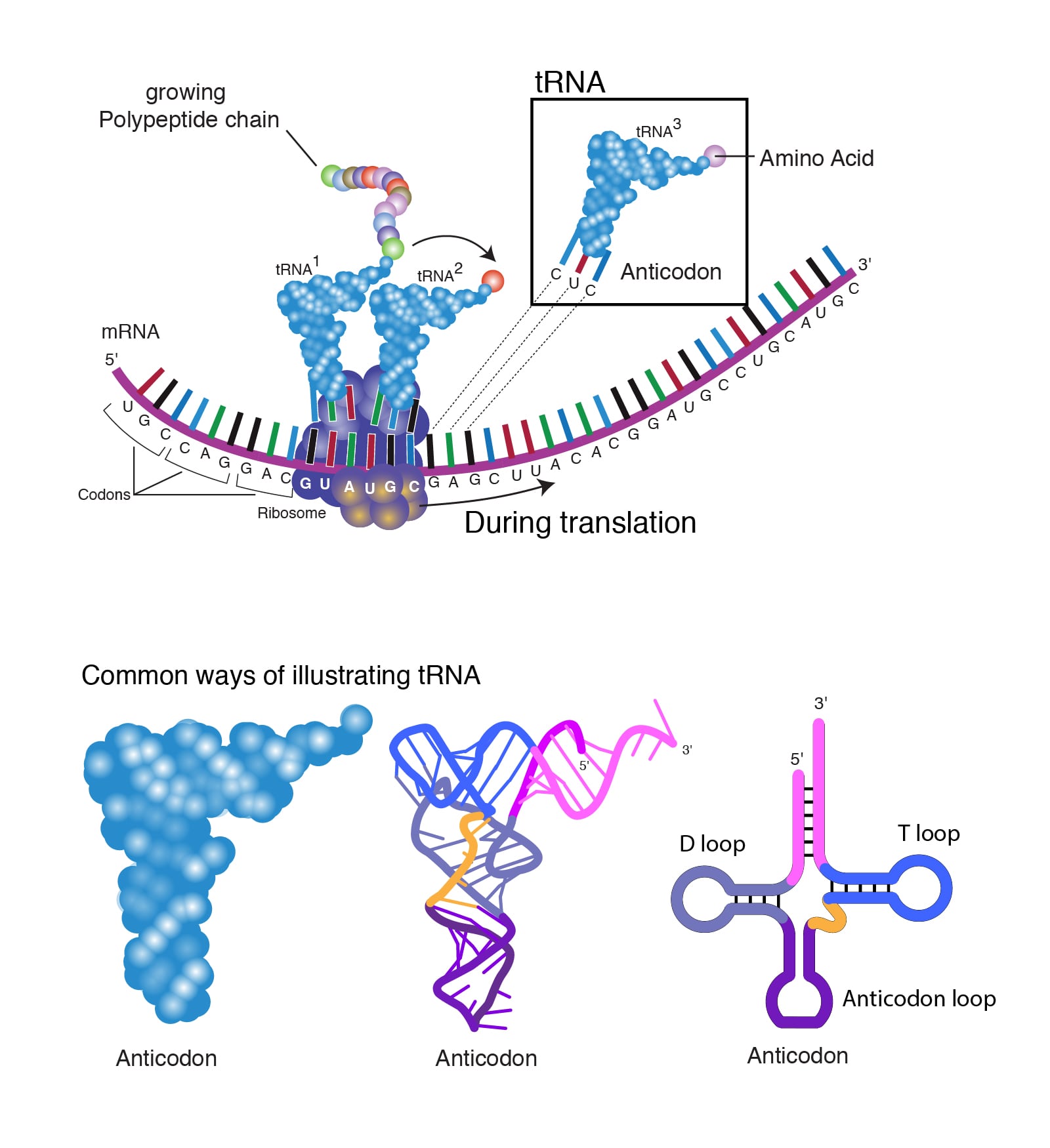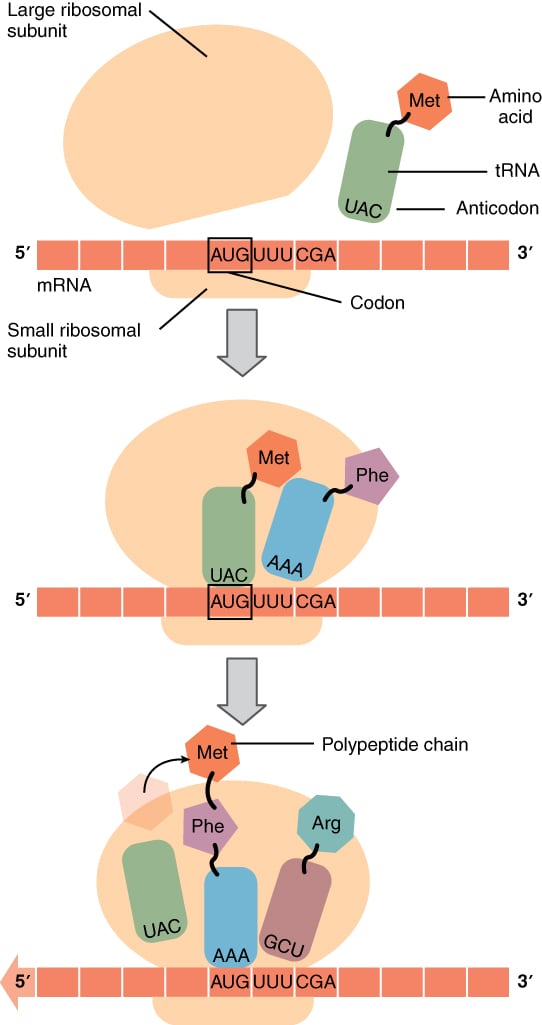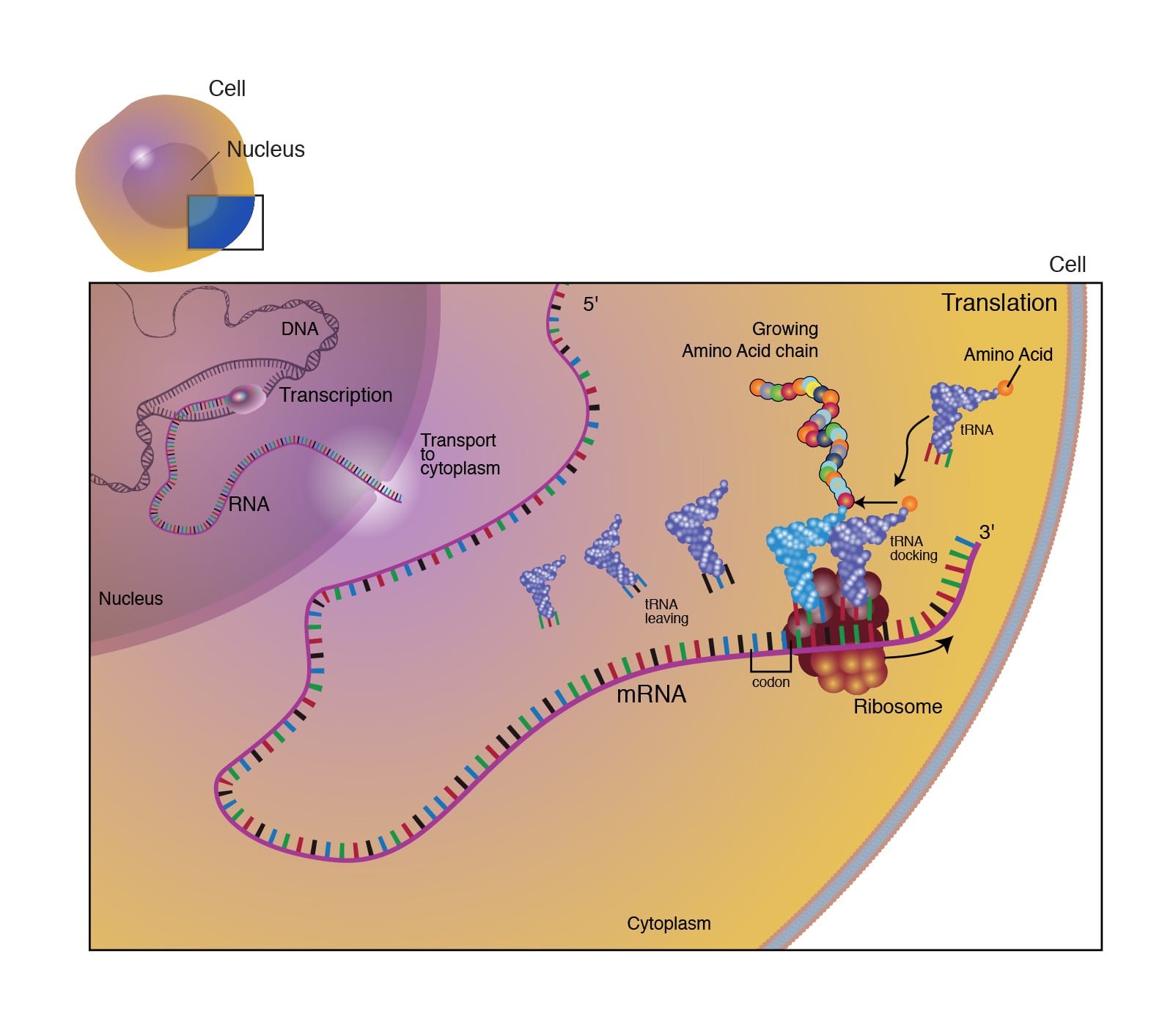Translation is the process of translating the sequence of a mRNA molecule to a sequence of amino acids during protein synthesis. The ribosome reads the sequence of mRNA in groups of three bases to assemble the protein. 40S ribosome binds mRNA and aminoacyl t RNA and locates AUG start codon on mRNA. 60 S ribosome has peptidyl transferase activity. Translation has three stages as follows:
Initiation: There is an area near the 5’ end of mRNA that is known as the untranslated region (UTR) or leader sequence. This portion of mRNA is located between the first nucleotide that is transcribed and the start codon (AUG) of the coding region. The leader sequence is important because it contains a ribosome-binding site.
First, three initiation factor proteins (known as IF1, IF2, and IF3) bind to the small subunit of the ribosome. This preinitiation complex and a methionine-carrying tRNA then bind to the mRNA, near the AUG start codon, forming the initiation complex on the mRNA. The small subunit of the ribosome has three binding sites: an amino acid site (A), a polypeptide site (P), and an exit site (E). The initiator tRNA molecule carrying the amino acid methionine binds to the AUG start codon of the mRNA transcript at the ribosome’s P site where it will become the first amino acid incorporated into the growing polypeptide chain. Once the initiation complex is formed on the mRNA, the large ribosomal subunit binds to this complex, which causes the release of IFs (initiation factors).

The large subunit of the ribosome has three sites at which tRNA molecules can bind. he A (amino acid) site is the location at which the aminoacyl-tRNA anticodon base pairs up with the mRNA codon, ensuring that correct amino acid is added to the growing polypeptide chain. The P (polypeptide) site is the location at which the amino acid is transferred from its tRNA to the growing polypeptide chain. Finally, the E (exit) site is the location at which the “empty” tRNA sits before being released back into the cytoplasm to bind another amino acid and repeat the process. The initiator methionine tRNA is the only aminoacyl-tRNA that can bind in the P site of the ribosome, and the A site is aligned with the second mRNA codon. The ribosome is thus ready to bind the second aminoacyl-tRNA at the A site, which will be joined to the initiator methionine by the first peptide bond.



Post-translational modifications: Proteins and polypeptides are modified after translation to be fully functional. Following modifications are seen :